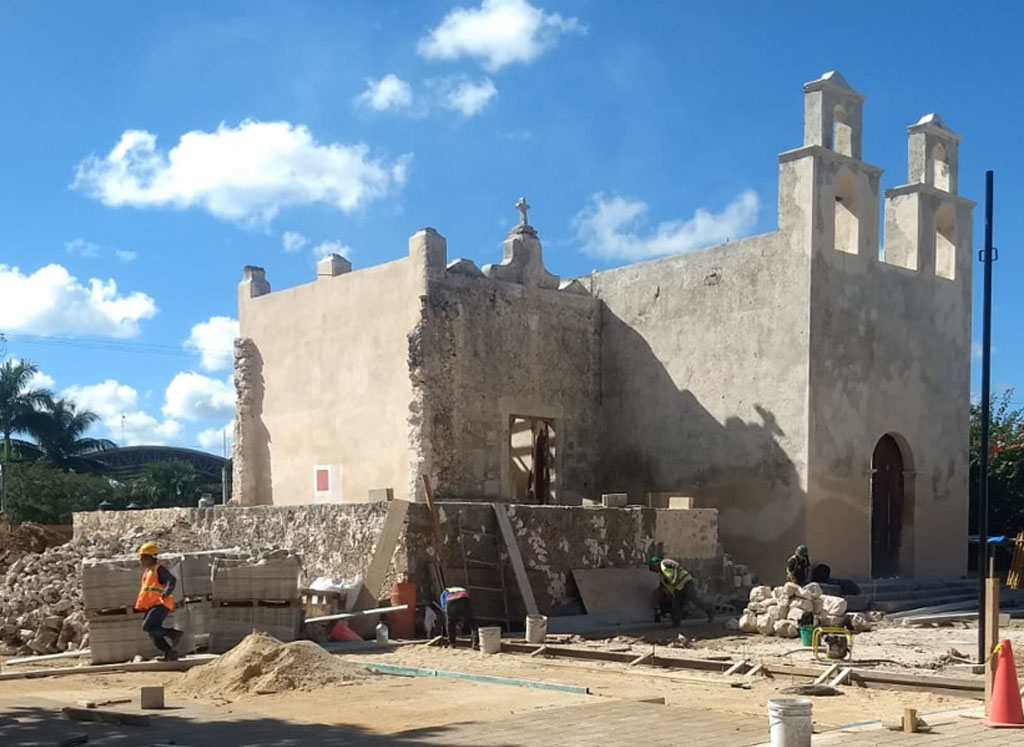Pisté has recently rebranded itself officially as Pisté de Chichén Itzá, which gives an idea of how vital the archaeological site is to the town.
Pisté is the gateway to the world-famous archaeological site of Chichén Itzá. But the town is more than just a place to drive by or stay the night. It’s a thriving Yucatecan town with a long history and complicated legacy.
Pisté de Chichén Itzá is a small village, located right in the center of the State of Yucatan, in the Tinum municipality. It is the closest village to the archaeological site of Chichen Itza. And due to its big tourist growth, this town is making itself known.
According to the National Institute of Statistics and Geography in Mexico, in 2005, Pisté’s population was a total of 4,467 people. A fun fact about this is that 2,279 were men and 2188 were women, almost equal.
Thanks to its proximity to Chichen Itza, you may have figured out that in fact, locals and archaeologists who work at Chichén Itzá have homes or rented rooms in Pisté. Today, Pisté is a place where ancient traditions coexist with modernity and tourism.
Many years ago, Pisté was the outer part of Chichén Itzá, stretching out several miles in every direction from the archaeological park that exists today. So it’s only natural that they are almost counted as one. This is another reason why it renamed its name to Pisté de Chichen Itza.
Today, few archaeological remains survive in Pisté, the major exception being its chapel and surrounding grounds. But it all sums up the Mayan history of the area and how later on Spaniards came and influenced the culture. Today we can appreciate a mix of cultures that have become one of its own. Mexican culture without a doubt has great things to offer in architecture, gastronomy, and arts.

Pisté’s chapel has brought up a lot of historic value to the town. It was built in 1619 by the Franciscan order and was named after John the Baptist. But in 1754. The chapel was re-consecrated by Friar Miguel Leal de las Alas as Nuestra Señora de la Inmaculada Concepción, or Our Lady of the Immaculate Conception.
But it lasted quite a few years standing until it was destroyed during the Caste War, though the exact date is unknown. What we do know is that in the 1850s, the Catholic temple was already burned out.
It wasn’t until the 2010s when archaeologists began preliminary archaeological investigations at the chapel as it was known that stones from Mayan temples belonging to Chichén Itzá had been used in its construction.
To everyone’s surprise, as archaeologists studied and analyzed the area, the entire chapel appears to be built with ancient carved stones from Mayan structures, which have been made visible after its reconstruction.
During the excavations, archaeologists also discovered the foundations and walls of what appeared to be ancient structures beneath the cement of a 20th-century park.
Ruins of the restored Caste War era military garrison in Pisté, Yucatán. Photo: Carlos Rosado van der Gracht / Yucatán Magazine
Some theories have arisen regarding the foundations showing evidence dating back at least 1,000 years. This would point to a repurposing of an ancient Mayan construction rather than a construction of new architecture using ancient existing materials as was previously thought. This sounds way more interesting as we analyze it.

Excavations and restoration of the chapel and its surrounding area wrapped up in late 2021. In September 2022, the Catholic temple was repurposed as a museum telling the story of the Caste War and Pisté’s role.
If you want to pay a visit to Pisté, its gastronomy, and the chapel, follow the road to Chichen Itza. It doesn’t matter if you are coming from Cancun or Merida, the signs are clear and will lead you right.
You can even spend a night in Pisté and try to visit the archaeological site of Chichen Itza early in the morning. This is a good idea since you’ll probably be the first to get there. As the site opens at 8 am, you are likely to avoid crowds
The town is full of hotels and restaurants ranging greatly in price to accommodate visitors and locals working at the archaeological site.
Source: Yucatan Magazine